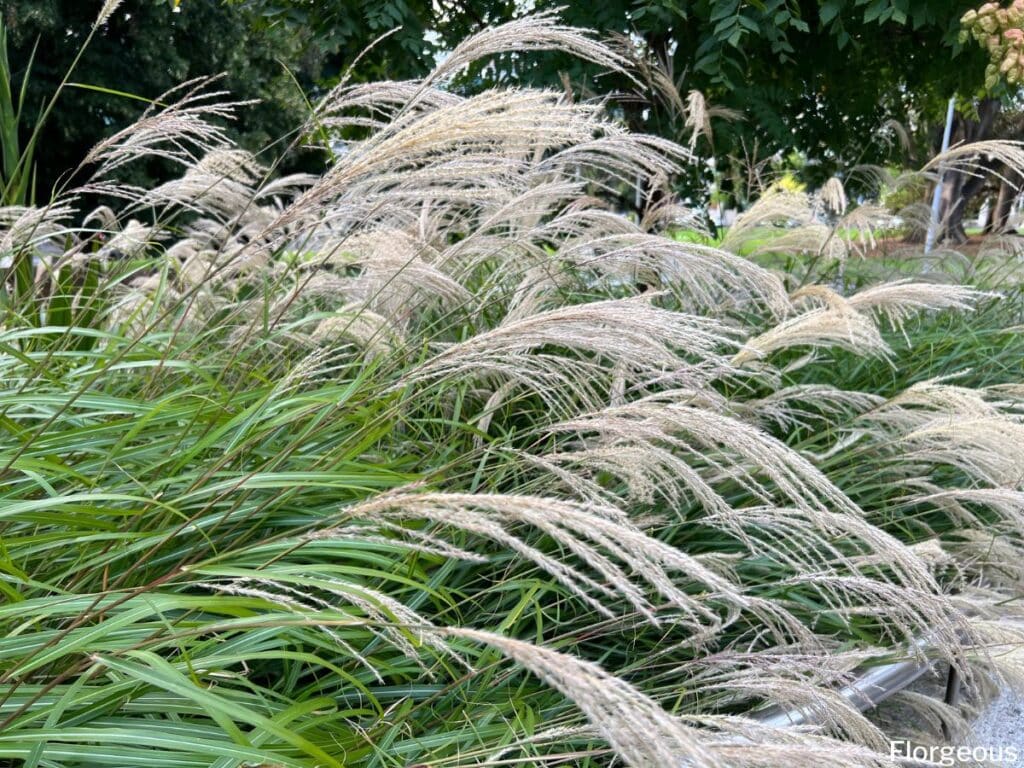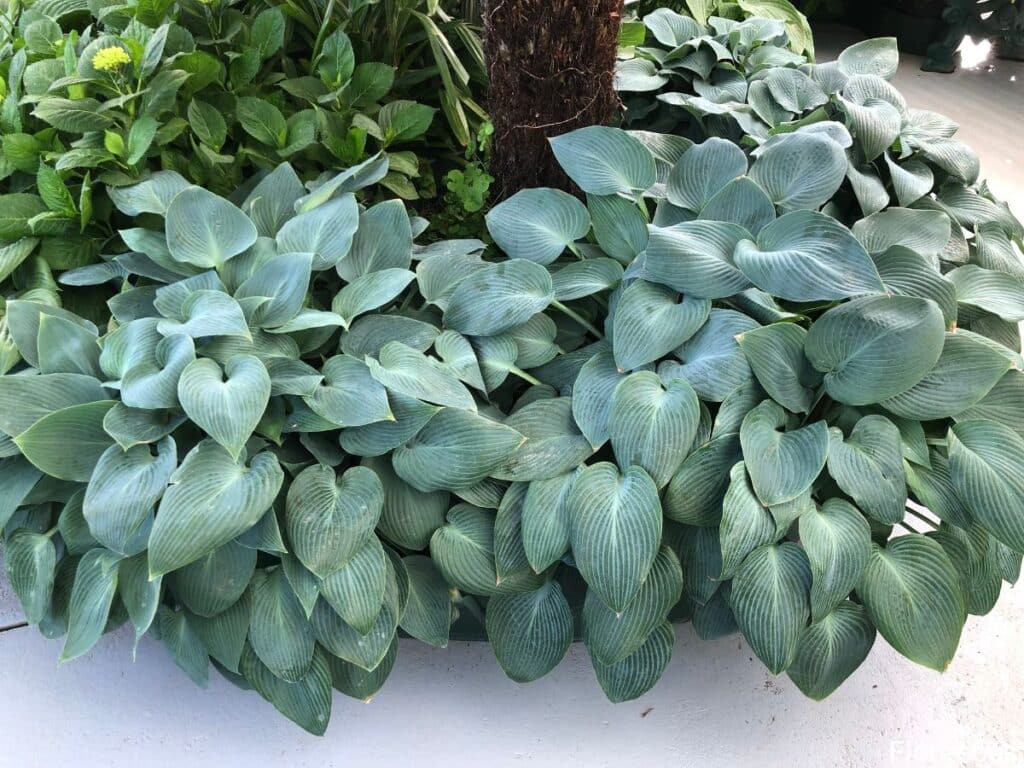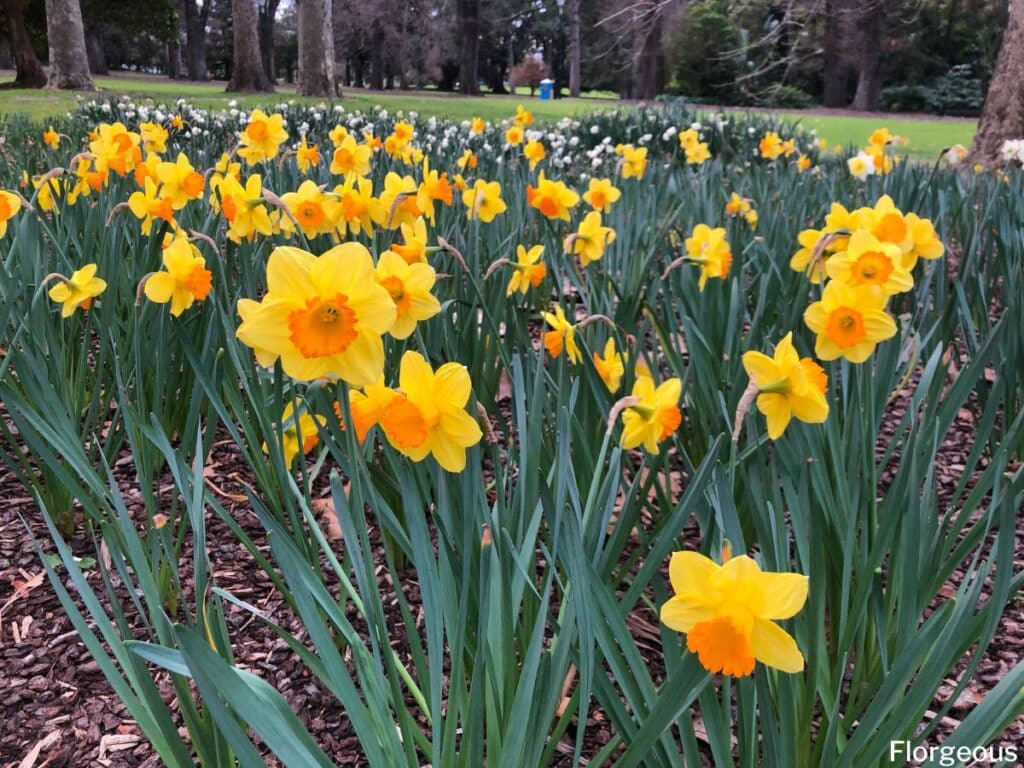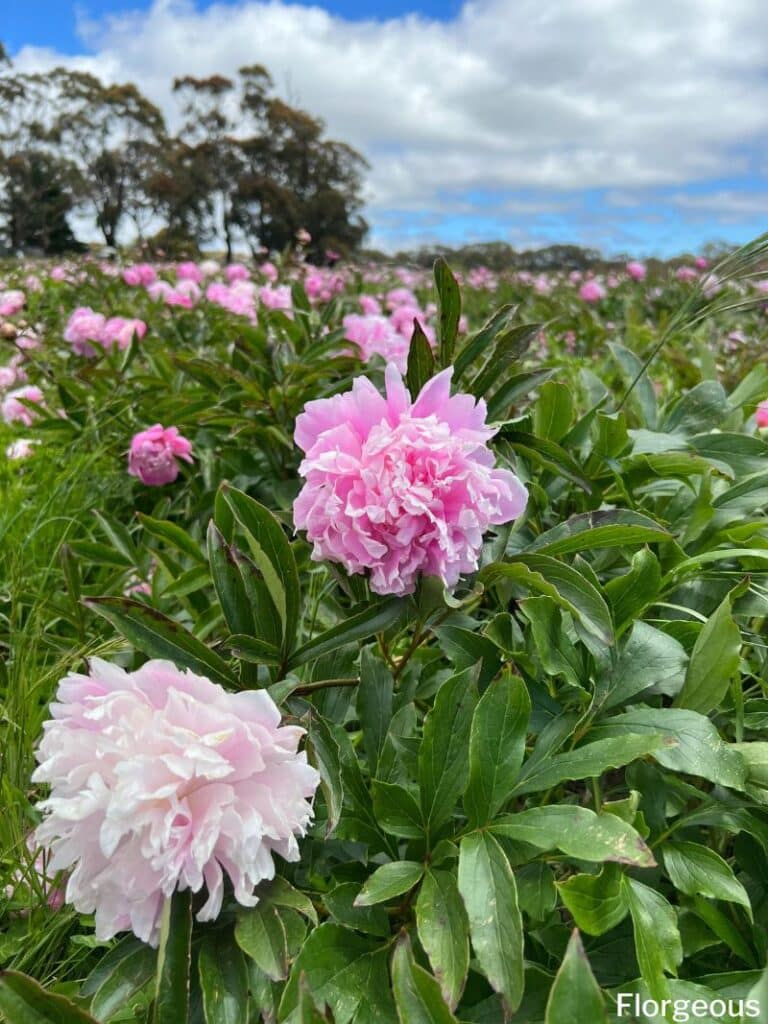Lilacs (Syringa vulgaris) can create a breathtaking sight when these woody shrubs are in full bloom. These flowering shrubs produce large showy clusters of flowers in colors like white, purple, and pink. These vivid flowers are not just charming to look at, the fragrant flowers will also make your garden smell heavenly.
Gardeners love to combine lilacs with other plants to accentuate their blooms or to enhance the aesthetics of these deciduous shrubs when they become dormant for winter.
The best lilac companion plants include species like switchgrass, muhly grass, mock orange bushes, flowering cherries, hyacinths, lady’s mantle, hostas, tree peonies or daffodils because these other plants will add lots of interest, texture, and charm next to the vibrant flower colors.
In this guide, we are going to take a closer look at these companion plants and we discuss creative ways to use them in your landscapes.
What to Grow with Lilacs
When you are busy choosing the best lilac companions, it is good to keep the growing requirements of this deciduous shrub in mind.
When it comes to growing lilacs, these shrubs prefer a full sun position with a minimum of 6 – 8 hours of direct sun. If they are planted in too much shade, they won’t produce beautiful blooms. In extremely hot regions, you can plant them in light shade and they bloom in late spring to early summer.
These flowering bushes also prefer well-drained soil that is slightly alkaline and they prefer deep infrequent watering (Once every 10 – 14 days or once a week for new plants).
The best companions are plant species that also love lots of direct sunlight and dryer soil conditions. You can, however, also add shade-loving perennials underneath a lilac bush because these showy shrubs can create plenty of shade.
Some gardeners also love to pair these perennial shrubs with evergreen plants so the garden bed will stay full of color and charm during winter when the lilac shrubs have become dormant.
Let’s take a look at some of the best companion plants for lilacs and the right way to combine them in your garden space.
Ornamental Grasses

Ornamental grasses like switchgrass (Panicum virgatum) or muhly (Muhlenbergia capallaris) can also be terrific neighboring plants to add to your garden if you want to add more texture or want to create a sense of movement. These beautiful grasses will also add lots of interest with their charming flowering heads.
Muhly is beloved for its charming delicate pink flower blooms while switchgrass is beloved for its texture-rich showy leaves.
These showy grasses grow well in full sun but can also survive in dappled shade. As with lilacs, they don’t like soil that is too moist. These two grass varieties are compatible with most soil types but there are some grass varieties that won’t grow well next to lilacs.
To create an interesting effect, you can add bunches of ornamental grass in front of or next to your vibrant lilacs.
Hostas

Hostas (Hosta spp), also known as plantain lilies, are superb for shaded parts of your garden like underneath large lilac bushes. The lighter varieties of this plant will add lots of color to your garden bed and can lighten up darker areas.
Plantain lilies will also produce charming flowers on tall spikes that can add more interest to your gardens.
Hostas prefer partial shade but can also grow in deep shade. In direct sunlight, these foliage plants can become scorched. These plants prefer moist soil conditions but should be planted in free-draining soil because they can become weak if they are waterlogged.
Plantain lilies can make a great ground cover for your taller plants or can be useful for concealing the base of your lilac bushes.
See more: What pairs well with hosta plants
Daffodils

Daffodils (Narcissus) are members of the Amaryllis family and can also be great additions to your lilac garden. These striking yellow or white bell-shaped flowers will add lots of contrast to your garden and they are great for filling out empty areas around lilac shrubs.
The spring bulbs are pretty easy to grow. You can plant these lilac bush companions in full sun or in partial shade in just about any soil type as long as it drains well. The flowers don’t need a lot of water and can suffer from root rot if they are kept moist for too long.
Daffodils will only grow up to 16 inches tall and as such, should be grown in front of your lilacs. These striking specimen plants will die back during winter time and their bulbs can be harvested and stored during the colder months or you can leave them in the ground.
They should re-emerge during early spring and will be some of the first plants to bloom after the winter.
Peonies

When you pair lilacs and peonies together in the garden, these two plants can create a stunning visual contrast.
The vivid colors of peonies, especially whites, pinks and reds, can compliment lilacs’ gentle pastel hues, making an eye-catching dramatic contrast display to the clustered flowers of lilacs.
You can easily grow herbaceous peonies and tree peonies into the same garden bed to create a visually appealing landscape design.
Mock Orange Shrubs
Mock orange (Philadelphus coronarius) are members of the Hydrangeaceae family and can be terrific lilac companions if you want to create showy fragrant hedges, screens, or borders. These dense shrubs produce single white flowers that smell like orange tree blooms.
Mock orange shrubs are evergreen and are great for keeping your garden beds full and lush during the cold and dull winter months.
These plants have a very similar growing requirement as lilac bushes. They prefer full sun positions but can also grow in partial shade. The plants need well-drained soil but do require a little bit more frequent watering compared to a lilac tree since it loves moist soil.
You can plant lilac and mock orange bushes next to one another and keep both plants trimmed to form showy hedges with lots of fragrant flowers.
Alternatively, allow your lilacs to grow taller and plant the mock orange shrubs around the base of your purple lilacs to create borders or screens with lots of contrast.
Flowering Cherries
Flowering cherries (Prunus serrulata), also known as Japanese cherry trees or sakura, can be good companions to grow next to a lilac tree. You can also grow lilac shrubs around the base of Japanese cherries to fill out your garden.
Japanese cherries are ornamental trees that can grow up to 30 feet (9 meters) tall. These ornamental trees can grow in just about any soil type that drains well but it does prefer soil that is kept a little bit moist.
As with common lilac bushes, they also need a lot of sunlight each day or they won’t produce beautiful flowers.
These flowering trees usually bloom for about a month during spring and will create a striking effect when their showy flowers appear at the same time as your lilac blooms.
Grape Hyacinths

Grape hyacinths (Muscari armeniacum) are great neighboring plants to consider if you need something around the base of a lilac tree.
These perennial bulbs produce vivid urn-shaped flowers on spikes in a bright blue color. The blue flowers will add lots of contrast to your garden if you pair them with white blooms.
Grape hyacinths grow very well in direct sun or light shade. These plants are quite hardy but don’t like overly wet feet or extreme droughts. They will grow well in the light shade created by lilac trees.
These charming bulb plants can quickly spread all over your garden beds and will look wonderful if they are mass planted around the base of a lilac tree. You can also grow them in rows in front of a lilac hedge to create lots of contrast in your garden.
Lady’s Mantle
Lady’s mantle (Alchemilla) is a beautiful herbaceous perennial to include in a cottage garden next to lilac bushes.
These herbaceous shrubs will add lots of color to your garden with their vibrant green leaves and showy lime green or yellow flowers.
The flowering shrubs can grow well in fertile soil that drains well and they can tolerate full sun but prefers a shaded position, especially if it is planted in a warm region. This shrub isn’t too drought-tolerant and should be watered regularly.
You can grow lady’s mantle underneath taller lilac varieties so they can conceal the base of your other flowering shrubs. They can also be planted next to shorter lilac varieties to create interesting mixed borders or hedges.
Read more: Lady’s Mantle Companion Plants
What NOT to Grow with Lilacs
Not all plants will grow well in your lilac garden because they might have a different growing season or different growing requirements.
Avoid planting lilac bushes in deep shade areas underneath tall trees because they need plenty of direct sunlight to flower. Lilacs also don’t like wet feet and shouldn’t be grown with plants like ferns, begonias, or hydrangeas because these species need a little bit more water and shade than your lilacs can handle.
Landscaping Ideas for Lilacs and Companions
Once you manage to get your hands on the good companion plants we discussed in this guide, it will be time to get creative. There are lots of different ways to use lilacs and companions in your garden to create showy spaces.
Let’s explore some of the best ways to use your companion plants with lilacs to create a more interesting garden.
Use Lilacs as Fragrant Hedges or Borders
Lilacs and other flowering shrubs can be used to create charming hedges, borders, or privacy screens in your garden. You can mix different plants and keep them all pruned to form thick flowering hedges.
Shrubs like lady’s mantle or orange mock will add plenty of color to your garden and these flowers will smell wonderful when they are in full bloom.
For an especially charming effect, you can also grow shorter flowering plants like grape hyacinths in front of your mixed borders. This will help create more dimension in your garden.
Use Lilacs in Containers
Lilacs can also grow well in containers. You can trim them into shrubs or topiaries and add other interesting flowers like grape hyacinths or lady’s mantle underneath them to fill out the container.
Use Lilacs Underneath Short Trees
Lilacs can complement other flowering shrubs or small trees if you grow them underneath these larger plants.
They will look charming underneath a beautiful floral species like Japanese cherry, especially if they are standing out amongst mass-planted hostas as ground cover.
Final Thoughts
Lilacs can add plenty of charm to your garden and will attract pollinators and other beneficial insects like bees and butterflies that will bring your garden to life. They look especially inviting if you combine them with companion plants like ornamental grass, mock orange bushes, grape hyacinths, lady’s mantle, hostas, and daffodils.
We hope that our guide offered some insight into your companion planting journey and that you can now create interesting garden spaces with some fresh new plant combinations.
Learn more about lilac symbolism to understand why gardeners love growing this plant.
*image by saharrr/depositphotos







